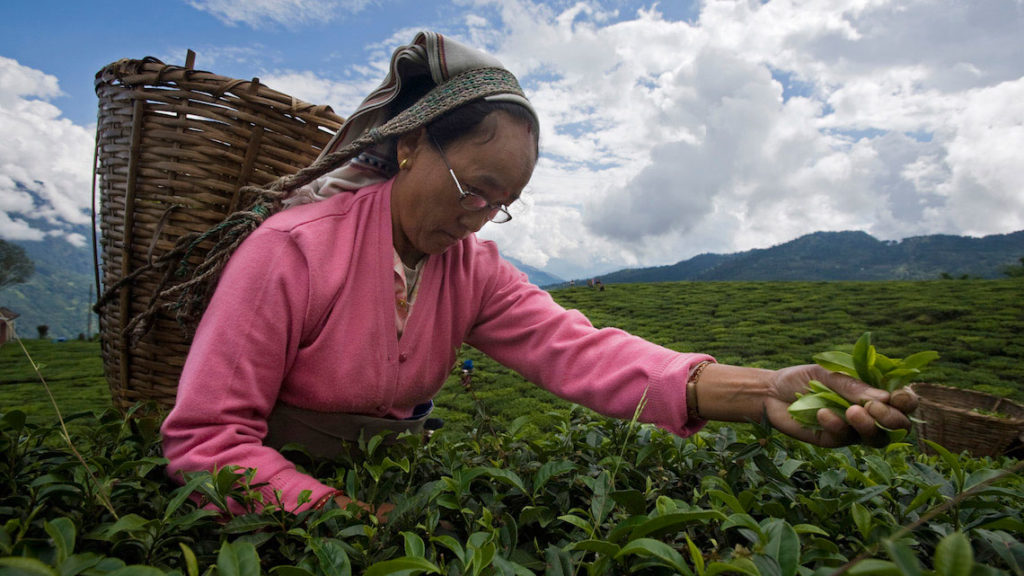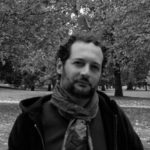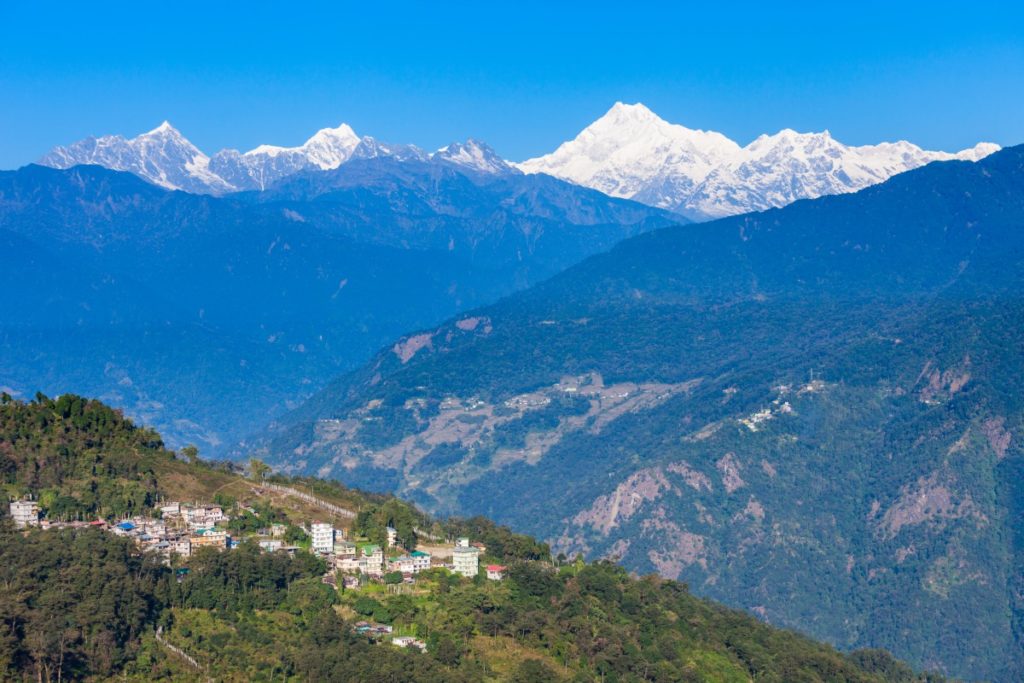A 100% Organic Model Is Possible: The Indian State of Sikkim Shows Us How
HEALTH, BRICS, ORGANIC, GMO, GENETIC ENGINEERING, SCIENCE, 3 Dec 2018
Manlio Masucci | LifeGate – TRANSCEND Media Service
The Indian state of Sikkim is the first to be certified as fully organic, and is now ready to export its model to the rest of the world. Its delegation told us how all this has been possible.
14 Nov 2018 – This journey starts in Sikkim, a small Indian state in the Himalayas, and ends at the FAO in Rome, with an intermediate stop at the Italian Parliament. A journey that promises to go far and last a long time because of the strength of its message and ability to contradict the mantras of the agro-food industry, which has enriched itself by exploiting the environment as well as small and medium-sized local production and citizens’ health: a conversion from traditional to organic agriculture isn’t only possible, but a necessary and more profitable solution for local economies.
The delegation from Sikkim, led by Chief minister Pawan Kumar Chamling, aims to move beyond theory and speculation by exporting a model that has been certified and proven first-hand. As the members of the delegation explain, what is at stake aren’t simply the fortunes of an Indian state but those of the entire planet. The message is loud and clear: an alternative is possible, but what we need now is the political will to leave large interests behind for a renewed focus on the needs of people, farmers and our common home.
Sikkim’s organic model, from the Himalayas to Europe
The Sikkim delegation’s journey to Europe began in Dehadrun, in the Himalayan state of Uttarakhand, known across the world as the home of the organic farm and Earth University of Navdanya, the organisation founded by Vandana Shiva that has actively contributed to Sikkim’s organic transition.
httpv://www.youtube.com/watch?v=wuo5tBveUqk
The International Biodiversity Congress was an important milestone in which the Chief minister, alongside Shiva herself, announced the project of converting the Himalayas completely to organic agriculture and safeguarding biodiversity, adding that the aim was to export the “Sikkim model” to the rest of the world. “There’s no time to lose – explains the Chief minister – every government must take responsibility and set out the objective of achieving a fully organic world by 2050”. An ambitious yet realistic target, as is demonstrated by the progress made in the Indian state over the past 25 years, during which it has undertaken the path towards a poison-free model, respectful of biodiversity.
From #Sikkim 100% organic state to #OrganicHimalaya & 2050 Global #FoodSystem Transformation – #PoisonFree #organic #biodiverse Food & Agriculture https://t.co/q28YB92nNt @drvandanashiva @pawanchamling5 @NavdanyaBija @SwarajAnna pic.twitter.com/s45IeEwTr5
— Seed Freedom (@occupytheseed) 4 ottobre 2018
A journey that has lasted 25 years
But who are the architects of the Sikkim model and what path was followed to achieve a fully organic production? We asked Prem Das Rai, Indian scientist and member of the Sikkim Parliament: “To understand the success of the Sikkim model we must begin by stating that our party, the Sikkim Democratic Front (SDF), has been in government for 25 years. This fact is important because the transition to organic production isn’t the kind of policy that can be implemented in the short-term, but requires many years. Our political project began in 1994 and we began seeing tangible results in 2003, when the Chief minister approved a resolution that contained a commitment to make Sikkim a 100% organic state. At this point we moved to the next stage, that of certification, a process which took another ten years. Today Sikkim can boast the highest human development index levels in India, and this fact in particular demonstrates the success of our journey”.

Tea plantations in the Indian state of Sikkim, the first region to achieve 100 per cent organic production
The secret of success: organic conversion begins in schools
This path has shown positive results in all respects. Even in economic terms, farms that practice organic and biodiverse agriculture are 20 per cent more productive compared to monocultures that use chemical products. “It’s no longer a secret that chemical products in our food are damaging our health – Khorlo Buthia, secretary of Sikkim’s department of agriculture, explains the formula for this success –, so it’s normal that consumers’ desires shift increasingly toward organic produce, allowing citizens to benefit from the conversion”. However, people need to be informed so that they make the right decisions. This information, in the state of Sikkim, is integrated in the educational process, which is free at all levels, from kindergarten to university. “Already at primary school, in fourth and fifth grade, we’ve introduced modules on organic agriculture, to explain its function, the process of certification in the larger context of human development,” Buthia continues.
The Sikkim model at the FAO and Italian Parliament
Research, theory, planning, results. Supported and sustained by a strong political will. A simple recipe that has brought Sikkim to win the Future Policy Award, a prize given to the best global policies in the field of agroecology, organised by the FAO together with the World Future Council and IFOAM Organics International. An experience that has become a model for others to follow, attracting interest from all over the world, including Italy, where the Sikkim delegation met with the press and members of Parliament.
Read more: Industrial agriculture isn’t feeding the world, only agroecology can
The world looks to Sikkim with interest, but can its model be exported effectively? “Sikkim demonstrates that it’s possible to improve the health of the soil and people, to make agriculture a source of sustenance for farmers, and that chemical pesticides and fertilisers aren’t necessary,” Poudyal Somnath, Minister for Agriculture, replies. “Our model is absolutely replicable, and therefore I’m launching an appeal to the international community to commit to the transition to organic farming”.
________________________________________________
 Manlio Masucci, Navdanya International – I’m a journalist who focuses on environmental, commercial and labour market issues, exploring the connections between the economic interests of multinational corporations, commercial politics that are influenced by lobbyists and the damaging effects that systems of industrial production and distribution have on the environment as well as the health of workers and consumers. In the past few years I’ve devoted my attention to new generation free-trade treaties and to the quality of nutrition, with a particular focus on the behaviour of corporations regarding questions of intellectual property and biodiversity conservation. I’ve worked for the principal Italian media outlets, such as Ansa, Il Messaggero and Il Manifesto, and as a correspondent from New York, Buenos Aires and New Delhi. Additionally, I recently worked for the press office of the Monsanto Tribunal in The Hague, and in the communication departments of several Italian NGOs, as well as for the ILO (International Labour Organisation). I currently work for Navdanya International.
Manlio Masucci, Navdanya International – I’m a journalist who focuses on environmental, commercial and labour market issues, exploring the connections between the economic interests of multinational corporations, commercial politics that are influenced by lobbyists and the damaging effects that systems of industrial production and distribution have on the environment as well as the health of workers and consumers. In the past few years I’ve devoted my attention to new generation free-trade treaties and to the quality of nutrition, with a particular focus on the behaviour of corporations regarding questions of intellectual property and biodiversity conservation. I’ve worked for the principal Italian media outlets, such as Ansa, Il Messaggero and Il Manifesto, and as a correspondent from New York, Buenos Aires and New Delhi. Additionally, I recently worked for the press office of the Monsanto Tribunal in The Hague, and in the communication departments of several Italian NGOs, as well as for the ILO (International Labour Organisation). I currently work for Navdanya International.
Navdanya and the Navdanya movement were created by Dr. Vandana Shiva 30 years ago in India to defend Seed and Food sovereignty and small farmers around the world. Navdanya pioneered the movement of seed saving and seed freedom, which began in response to the crisis of erosion of agricultural biodiversity and introduction of GMOs and patents on seeds through intellectual property rights (IPRs) and so-called ‘free trade’ agreements. It has long fought against biopiracy, the patenting of indigenous knowledge by self-interested multinational corporations and won cases related to Neem, basmati rice and wheat in India. Navdanya promotes a new agricultural and economic paradigm, a culture of food for health, where ecological responsibility and economic justice replace the present greed, consumerism and competition which have become dominant in society. It aims at regaining the common good as a foundation for a renewed sense of community, solidarity and culture of peace. We strive to achieve these goals through the conservation, renewal and rejuvenation of the gifts of biodiversity we have received from nature and our ancestors, and to defend these gifts as commons. More…
Translated by Patrick Bracelli
DISCLAIMER: The statements, views and opinions expressed in pieces republished here are solely those of the authors and do not necessarily represent those of TMS. In accordance with title 17 U.S.C. section 107, this material is distributed without profit to those who have expressed a prior interest in receiving the included information for research and educational purposes. TMS has no affiliation whatsoever with the originator of this article nor is TMS endorsed or sponsored by the originator. “GO TO ORIGINAL” links are provided as a convenience to our readers and allow for verification of authenticity. However, as originating pages are often updated by their originating host sites, the versions posted may not match the versions our readers view when clicking the “GO TO ORIGINAL” links. This site contains copyrighted material the use of which has not always been specifically authorized by the copyright owner. We are making such material available in our efforts to advance understanding of environmental, political, human rights, economic, democracy, scientific, and social justice issues, etc. We believe this constitutes a ‘fair use’ of any such copyrighted material as provided for in section 107 of the US Copyright Law. In accordance with Title 17 U.S.C. Section 107, the material on this site is distributed without profit to those who have expressed a prior interest in receiving the included information for research and educational purposes. For more information go to: http://www.law.cornell.edu/uscode/17/107.shtml. If you wish to use copyrighted material from this site for purposes of your own that go beyond ‘fair use’, you must obtain permission from the copyright owner.
Read more
Click here to go to the current weekly digest or pick another article:
HEALTH:
- U.S. Terminates Funding for Polio, H.I.V., Malaria and Nutrition Programs Around the World
- Autism, Made in the USA
- Big Pharma Is a Big Menace to Global Health
BRICS:
- BRICS Expands to 56% of World Population, 44% of Global GDP
- Are Trump’s Tariffs Actually Hurting China?
- The “BRICS Sovereigns” vs the “Globalist Oligarchy”
ORGANIC, GMO, GENETIC ENGINEERING:
- Veganic Farming: How My Tiny Plot Produced 5,000 Pounds of Food without Using Manure
- Nothing New in New GMOs
- Alert! New ‘Redesigned GMOs’ Being Forced on Farmers and Consumers
SCIENCE:
